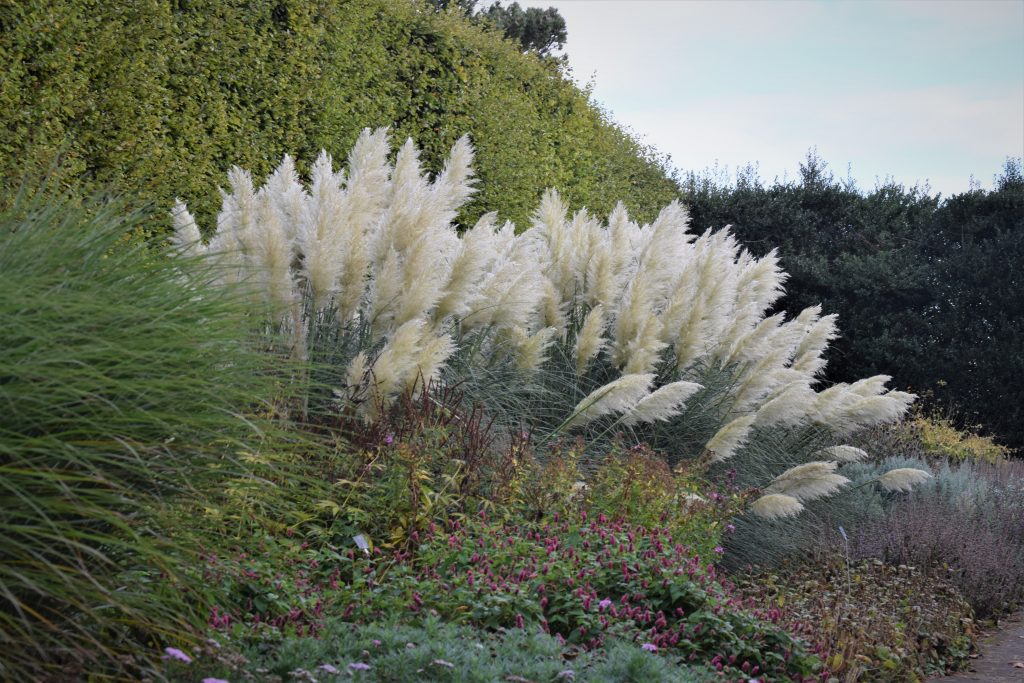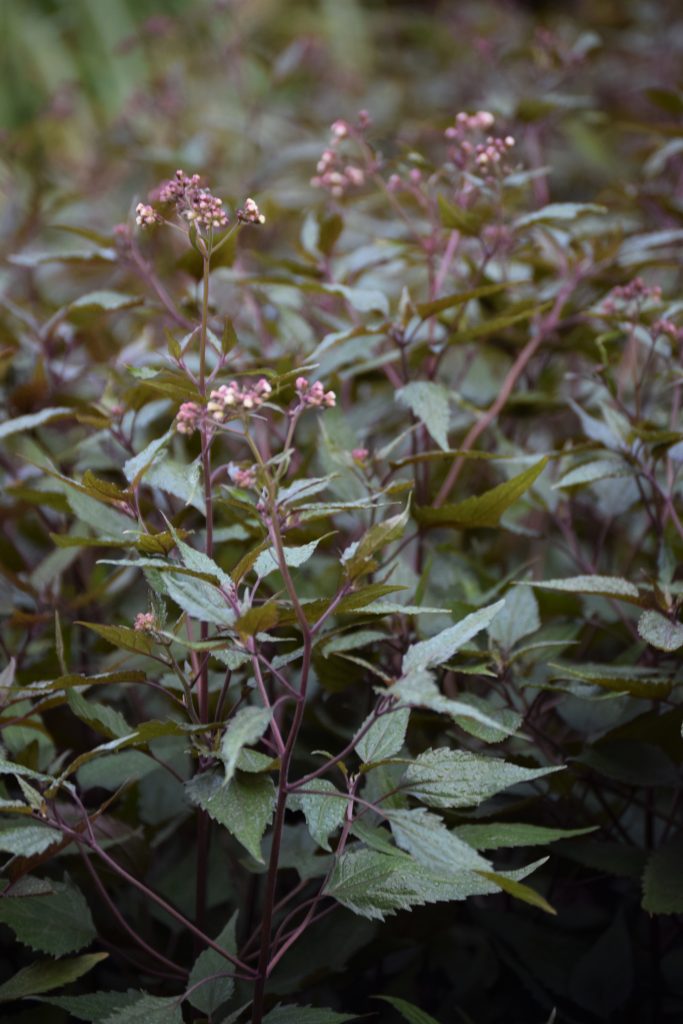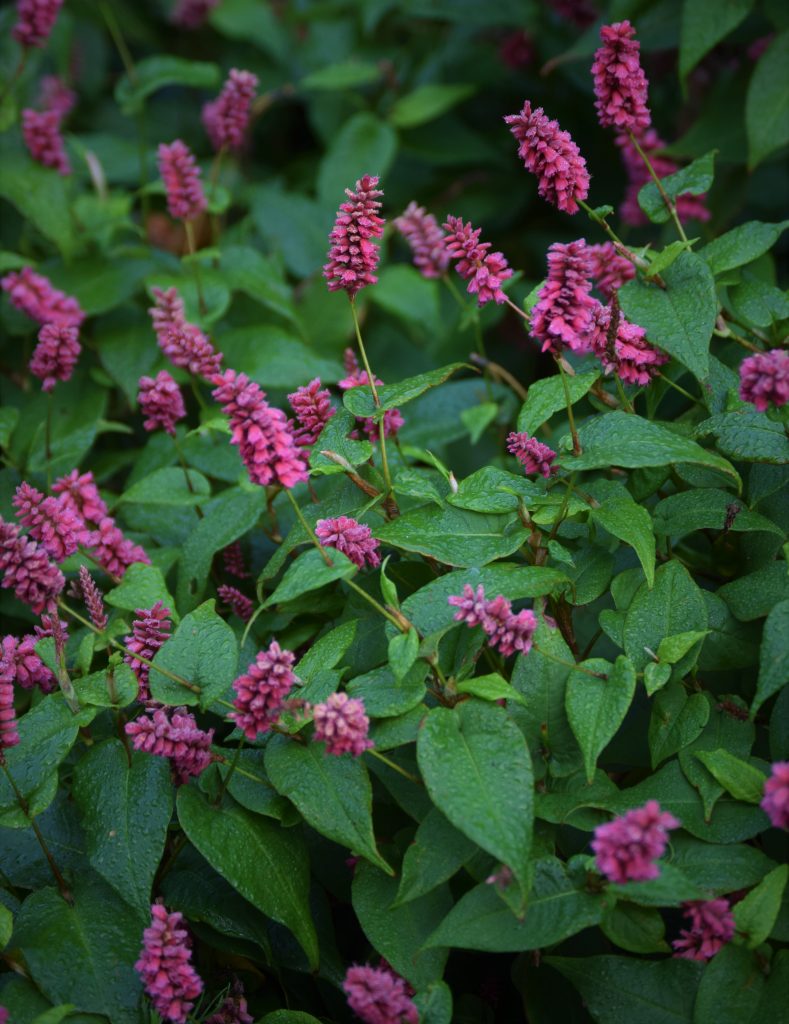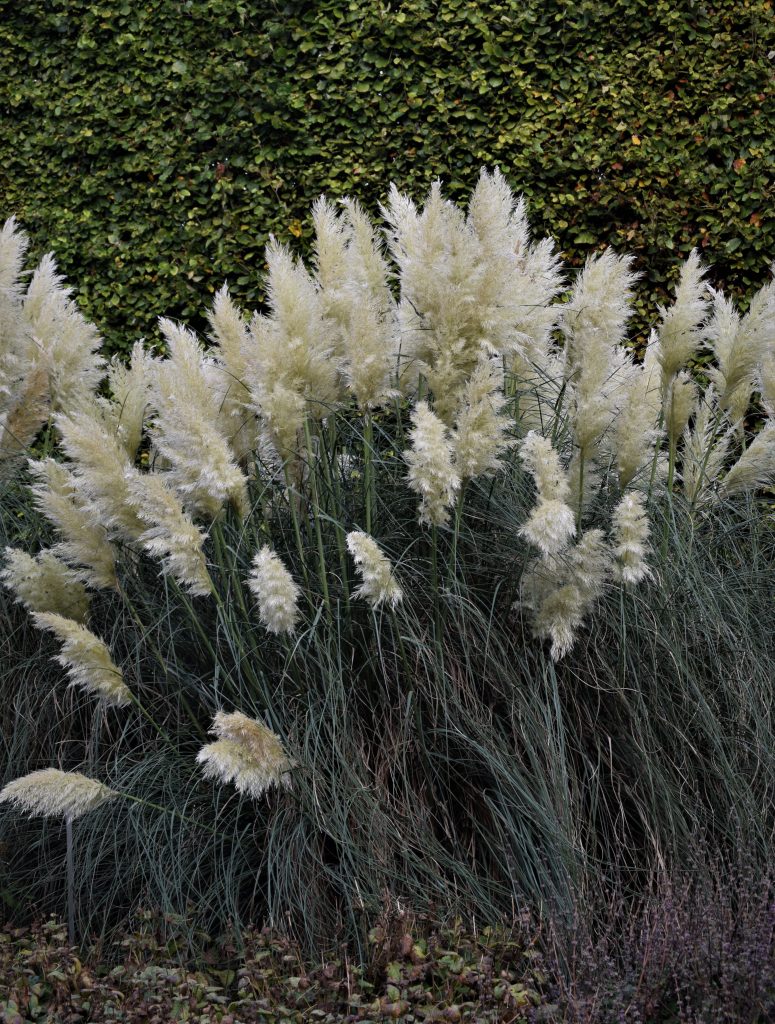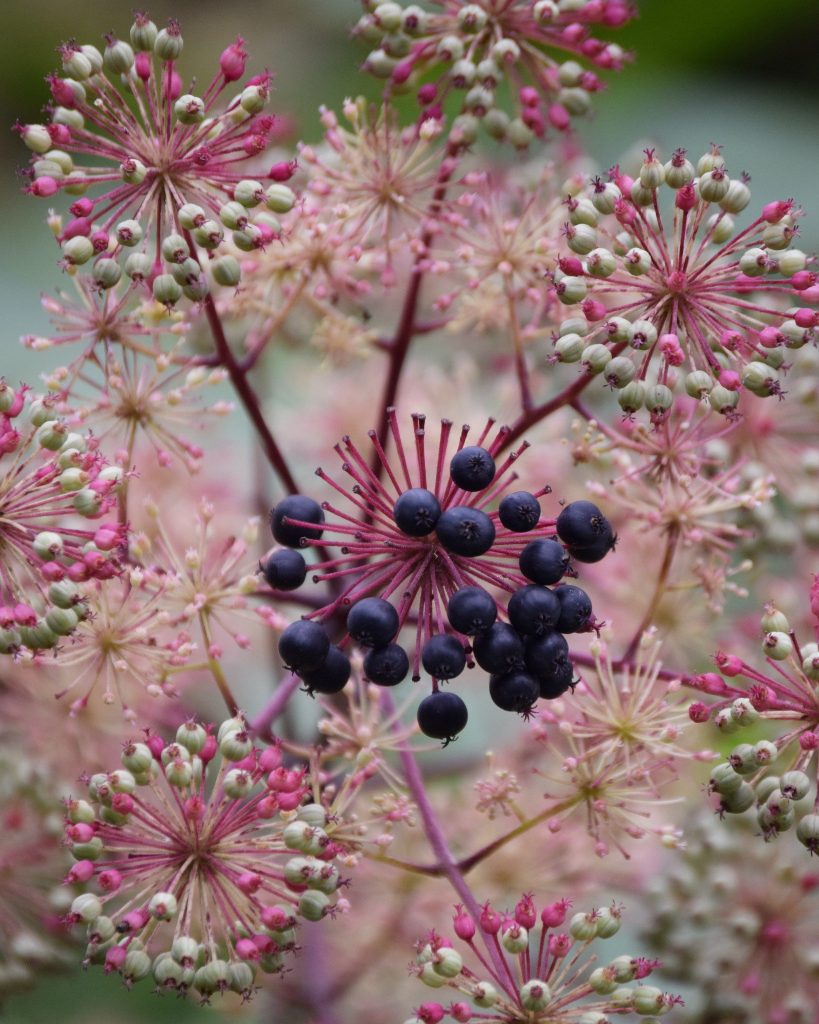You may have noticed a slight chill to the air and a softer, golden quality to the morning light, which can only mean one thing: autumn is here. Our late season flowering plants in the Herbaceous Border here at the Royal Botanic Garden Edinburgh still provide seasonal interest for these shorter days. It is recommended to design your garden with plants for this golden time of year. They can bring colour to your borders over the coming months, as well as providing a welcome source of pollen and nectar for insects as summer flowers fade in autumn.
Pictured below are some show stopping plants currently putting on a great display within our 165 metre long Herbaceous Border.
Ageratina altissima ‘Chocolate’
Fluffy heads of tiny white flowers are carried on stiff, upright stems with dark brown handsome foliage. In garden design selection this plant combines well with silver foliage plants. It is also a versatile plant for a mixed border and looks good with ornamental grasses. In addition it is an excellent plant for bees and butterflies. As a clump-forming perennial it prefers retentive soil, in sun or light shade.
Persicaria amplexicaulis ‘Inverleith’
This plant is clump-forming and a semi-evergreen perennial which grows to 1.2m in height. It has ovate, pointed and mid-green leaves from spring to autumn. The flowers are short, dense spikes of small, narrowly bell-shaped, reddish-pink flowers. It flowers from midsummer to autumn making it a show stopping plant for late season colour. It does not like dry soil. In garden design terms it thrives in a bog garden or beside a pond in full sun or partial shade. Much loved by pollinators such as bees and other insects.
Cortaderia selloana ‘Pumila’
This perennial is an evergreen grass which forms a compact clump of narrow, arching dark green leaves to about 45cm in length. The silky creamy-white plumes are freely borne on stems which reach 1.2m in height during late summer into autumn. It is a fantastic architectural plant that makes a great focal point. As for growing conditions this grass likes fertile, well-drained soil in full sun. It also requires ample space to develop into a specimen. It is recommended to protect the crowns of young plants in their first winter. Each year in late-winter or early-spring put on a good pair of gardening gloves and remove the previous year’s stems by cutting and combing. Take care as the leaves have sharp margins which may cut your hands.
Aralia californica
This is a bold herbaceous plant which reaches nearly 2m and creates a sense of stature in your borders. It has attractive terminal flower clusters which are composed of many smaller clusters of spherical heads. These then turn into small dark fruits in the autumn. In the wild it is found growing happily along streams, rocky outcrops and woodlands of N. W. USA. It can grow in full sun to full shade in evenly moist but rich soil. Aralias have a long medical history and in the past it has been used as a poultice for curing wounds, ulcers and sores. This was made by chewing or steeping the bark from the roots. A cordial was made sometimes from the berries and was believed to be good for gout. There is also some history of Aralia berry wine but this would be more to soothe the soul than heal the body.

